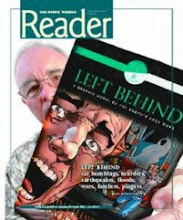A Nation in Moral Decline
32% of Americans believe the nation is in moral decline because adults are not reading and consulting Scripture. 29% believe the nation is in moral decline because of the negative influence of the media. 25% attribute corruption from corporate greed. (Barna Group and Focus on the Family-Thriving Pastor-Pulse Check 12/9/13)
Bible Engagement in the US
Lifeway Research about Bible engagement in North America finds 66% of Canadian churchgoers agree with the statement, "I desire to please and honor Jesus in all I do." However, 34% say they rarely or never read the Bible outside of church. Only 11% read it daily and 27% a few times a week or once a month. Only 3% do daily in-depth Bible study. 53% rarely or never study the Bible. 62% disagree with the statement, "If I go several days without reading the Bible, I find myself unfulfilled." When six other factors are present, individuals have higher levels of Bible engagement: 1) Confess wrongdoings to God and ask forgiveness. 2) Believe in Jesus Christ as the only way to heaven. 3) Make a decision to obey or follow God, knowing it might be costly. 4) Pray for people they know are not professing Christians. 5) Read a book about increasing their spiritual growth. 6) Have a one-on-one mentoring relationship with a spiritually mature Christian. There is a strong correlation between engaging the Bible and living accordance to the Scriptures. (CT's The Exchange 11/20/13)
Great Commission Being Fulfilled
According to Open Doors, 40 years ago there were only 200 Muslim converts to Christianity in Iran. Today, they estimate it is 370,000. Similar growth is occurring in the Asian subcontinent, sub-Saharan Africa and regions of the Middle East. Tragically, persecution is a sign the Great Commission is being fulfilled. (LifeSite News 12/4/13)
69% of Americans are either very religious (40%) or moderately religious (29%), according to a 2012 December Gallup Poll, with 31% being nonreligious. (Gallup 12/04/12)
The number of religiously unaffiliated people in China is more than twice the U.S. total population. About 700 million Chinese residents do not identify with a specific religious group. (Huffington Post 10/22/13)
Asian Americans Growing
Fueled both by immigration and birth rates, Asian Americans are the fastest growing racial group in the U.S. With a population of 18.9 million in 2012, they are projected to reach over 40.6 million by 2050. That will increase their proportion of the total population from 5% to 9%. Asian Americans consist of more than 34 ethnicities, each with vastly different backgrounds of languages, cultures, nationalities, time of immigration and more. 83% are in these top six ethnicities: Chinese, Filipino, Asian Indian, Vietnamese, Korean or Japanese. (CT's The Exchange 11/7/13)
R-rated Movies Damaging to Faith
Young people who watch R-rated movies are more likely to have decreased church attendance and to consider their faith less important, finds a recent Baylor Univ. study. "Viewing R-rated movies was damaging to religious faith even after accounting for the importance of religion in one's family, peer influence and parental monitoring of media, among other factors," said researcher Phil Davignon. However, watching the movies didn't affect whether or not young people have doubts about their faith or whether they thought it was acceptable to choose parts of the faith to believe without accepting the whole. (Review of Religious Research 6/13)
Most People Are Part of Religious Majorities
Nearly 3/4 of the world's people live in countries where their group is a religious majority of the population. (Huffington Post 10/22/13)
Today 69% of Hispanic Americans were raised Catholic, but only 53% have remained so. 31% who left Catholicism became evangelicals, 22% Mainline Christians, 13% other and 34% are unaffiliated. (CT 12/13)
97% of the world's Hindus live in only three countries: India, Mauritius and Nepal. (Huffington Post 10/22/13)
Alternative Punishment for Nonviolent Crimes
American evangelical leaders overwhelmingly support alternatives to incarceration for nonviolent offenders, according to the November Evangelical Leaders Survey. Only two percent of respondents do not support alternative measures. Evangelicals have a particular concern for those in prison as they are mentioned specifically by Jesus when telling his followers to care for the "least of these." This concern was reflected in the June Evangelical Leaders Survey that showed nearly all evangelical leaders have visited a prison, many of whom did so in a ministry context. Through relationships formed in ministry, evangelicals have seen the negative effects imprisonment often has on prisoners and their families. (National Association of Evangelicals, 12/10/13)
Prayer Helps People Cope
A Saarland Univ. and the Univ. of Mannheim in Germany study shows prayer helps people stay in control of their emotions and behavior. Those who pray when their lives become demanding find themselves better able to cope with temptation and control their emotions. (Church Leaders 12/6/13)
Religious Practice
is associated with higher levels of economic well-being and academic performance as well as reductions in the incidence of crime, delinquency, drug and alcohol addiction and problems related to physical and emotional health. (LifeSite News 11/15/13)
Saturated Media Culture
New research from author and psychologist Catherine Steiner-Adair finds many teens are turning to Internet videos to educate themselves on physical relationships, dating and gender stereotypes. Without parents monitoring their children's online viewing, Internet access provides them with content that can be confusing, and graphic images that can create a false understanding of appropriate intimate behavior. This encourages teens in particular to behave in a way online they never would in face-to-face interactions. (The Big Disconnect: Protecting Childhood and Family Relationships in the Digital Age by Catherine Steiner-Adair, Harper 2013)
76 Seconds to Communicate
According to LivePerson, today's consumers want access to information and support instantly, and if they don't find what they need quickly, they will look for it somewhere else. The study finds that, on average, consumers won't wait more than 76 seconds if they need help during their online session. 58% are frustrated by poor quality service online. 49% continue to find websites difficult to navigate with 33% struggling to seek help or locate customer service. (Center for Media Research Brief 11/26/13)
More Info Faster
Millions of Americans feel having too much information actually limits their ability to simply make a choice. When it comes to books, 35% of adults say while they enjoy reading, they feel most books are too long. Men (41%) are notably more likely than women (28%) to feel this way. Only 27% of Elders say most books feel too long, while 30% of Boomers and 31% of Busters likewise agree. Among Millennials, 49% say most books are too long for them to enjoy, yet 76% want to keep up with current trends. The research shows while people want to "stay up to speed," they want their information to be compact. This doesn't mean they don't want substance; it more likely means they want to get to the substance faster. (Barna Group 10/22/13)
Time Names Pope Person of the Year
Pope Francis has been named Time magazine's 1023 Person of the Year. Francis, who is the Catholic Church's 266th pope, is Time's 86th person of the year. He is the 3rd pope to be named person of the year (Pope John XXIII was named in 1962, and Pope John Paul II in 1994). (Media Daily News 12/11/13)
Megachurch Stats
Five million people worship in a U.S. megachurch on a typical weekend. Currently there are 1,650 megachurches in the U.S. While almost 10% of Protestant churchgoers attend a megachurch, they represent only 0.5% of the roughly 320,000 U.S. Protestant churches. While many are nondenominational, most Protestant denominations have at least one megachurch. 21% were founded in the last 20 years. 22% were founded by their current lead pastor. 79% of current megachurch pastors led their congregation through its most dramatic growth era. The median age of today's megachurch lead pastor is 55 (5% are under 40 and 18% are under 45). (Leadership Network 12/13/13)
Younger Donor Trends
According to a new Achieve survey, organizations that want to persuade people in their 20s and early 30s to give and volunteer need to update their websites frequently and include compelling details about their causes and the people they serve. Three in four donors born from 1979 to 1994 were put off when a nonprofit's website had not been updated recently. Six in 10 want nonprofits to share stories about successful projects and programs and appreciate information about an organization's cause and the people it serves. Also, too much info about the group itself especially bothers young donors who are open to making small donations more frequently. 84% prefer to give online. Eight in 10 have smartphones and use them to read e-mails and articles from nonprofits. Three in four have liked, retweeted or shared nonprofit content on social networks. (The Chronicle Board Report Sept./Oct. 2013)
Giving to Evangelical Churches
and ministries outpaced giving to secular charities in 2012. In its 4th annual State of Giving report, ECFA reveals giving to more than 1,600 of its accredited organizations increased 6.4% last year. Donations reached $11 billion in 2012 vs. $3 billion in 2011. However, Empty Tomb, Inc. research suggests giving trends among denominations has declined for four consecutive years. The only other comparable period of prolonged decline was from 1928 through 1934, mostly during the Great Depression. (ECFA 12/4/13)
Church Attendance not the Only Decline
Some reports show 80–85% of all U.S. churches are either in decline or stagnant when it comes to membership and attendance. Other reports state 50% of pastors would like to quit, and as many as 85% are discouraged. Americans no longer look to experts with answers no matter how magnetic and regardless of how great the show. They prefer to connect on a personal, one-on-one level. This is why newspapers and magazines have fewer readers and why network TV is in decline. It is also why many have dropped out of church. And this is why Facebook has grown, allowing people to connect and communicate, using new technology, to a small circle of family and friends. (American Church Magazine 11/13)
Divorce Rises in Mature Population
For people 50 and over, divorce has risen to its highest level on record. A National Center for Family and Marriage Research study reports in 1990, only one in 10 people who got divorced was 50 or older; by 2009 the number was roughly one in four. If that increase holds steady, the number of over-50 divorces in 2030, based on current trends, could easily top 800,000 per year. (The Gray Divorce Revolution 11/13)
People Retiring Later
Retirement is coming later in life and it no longer represents a complete exit from the workforce. Prior to the Great Recession, the average age of those who report retiring was 57, while the average for those who retired afterward is 62. The line between working and retirement is shifting, with 82% of Americans 50 and older who are working, but not yet retired, saying it is likely or very likely that they will do some work for pay during their retirement. Of those who are currently working, 47% now plan to retire at a later age than they expected when they were 40. (Center for Media Research Brief 12/2/13)
Success Guarantee?
Children raised by both a Mom and Dad are more likely to go to college and to make more money than those raised by unwed and divorced parents, and the impact is greater among the poor according to a recent American Enterprise Institute panel discussion. Unwed childbearing is now the new norm for U.S. women under 30. There is also a growing class divide with the low income having more children out-of-wedlock than those with high incomes. Thomas B. Fordham Institute's Mike Petrilli said if students follow the "success sequence": 1) get a high school diploma 2) get a job 3) get married and 4) have babies in that order, they are "almost guaranteed to not be poor" and their children will not be poor. (Christian Post 10/31/13)
Children and TV
According to the Sourcebook for Teaching Science, the average American youth watches about 1,500 hours of TV in a year but spends only 900 hours in school per year. 70% of daycare centers use TV on a typical day. 54% of four- to six-year-olds said they preferred watching TV to spending time with their fathers. (Sourcebook for Teaching Science)
Engaged Workers Help Bottom Line
Organizations with higher levels of employee engagement are more likely to retain employees, while those suffering from high turnover are likely to find employees don't feel valued, don't trust senior leaders and don't understand the organization's goals and how they contribute to meeting them. The new 2013 Trend Report: The State of Employee Engagement reports 67.7% of employees ranked as engaged in 2012 vs. 66.6% in 2010. A correlation was found between profit level and level of worker engagement. (Incentive 11/22/13)
Longer Hours
Americans are now putting in longer work weeks than ever, yet most still think they have a good work-life balance. A new Rasmussen Reports survey finds only 31% of employed Americans work 40 hours a week, 40% more than 40, including 9% who work more than 50. 28% work fewer than 40 with 10% working fewer than 20. (Rasmussen Reports 12/13/13)
Millennials Read Newspapers
How many Millennials read newspaper content every week? 56%, says the Newspaper Assoc. of America. That includes both those who read print and online newspapers. 60% of those 18 to 34 who read their local newspaper or newspaper website believe it is trustworthy. 55% believe the papers operate ethically and have the public's best interest in mind. (Ragan.com 12/12/13)
Teen Spending
The recent Piper Jaffray Taking Stock with Teens consumer insights survey found fashion accounts for 39% of teen budgets. 78% of females and 82% of males shop online. 60–70% of teens prefer to shop the websites of their favorite store-based retailers. Teens represent more than one-third of video game players, and gaming accounts for 7% of teen spending. (Center for Media Research Brief 10/28/13)






















No comments:
Post a Comment